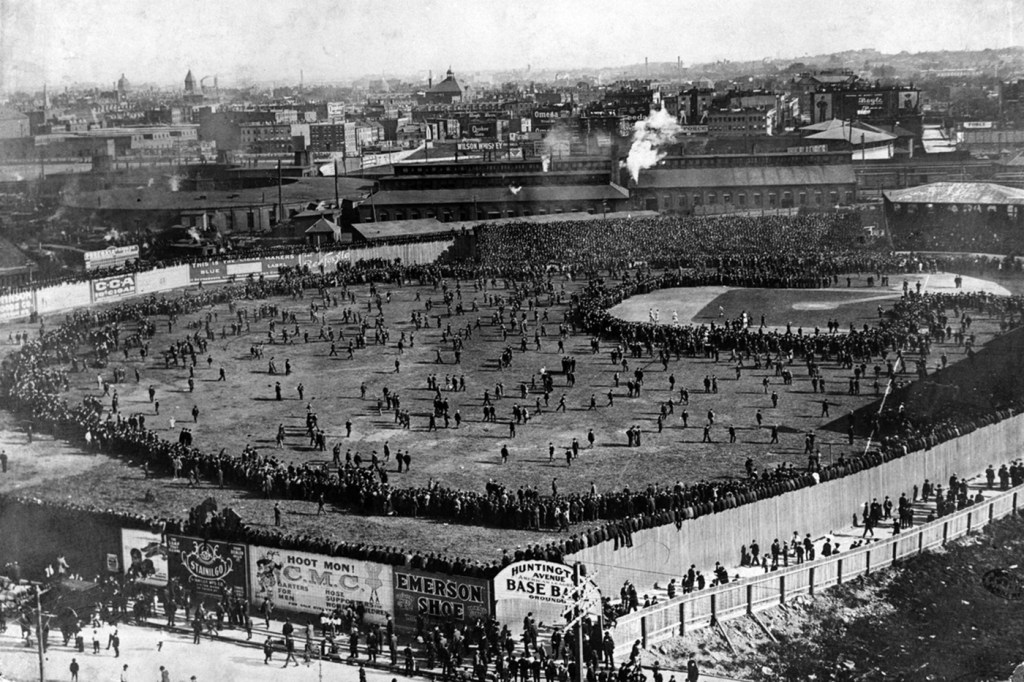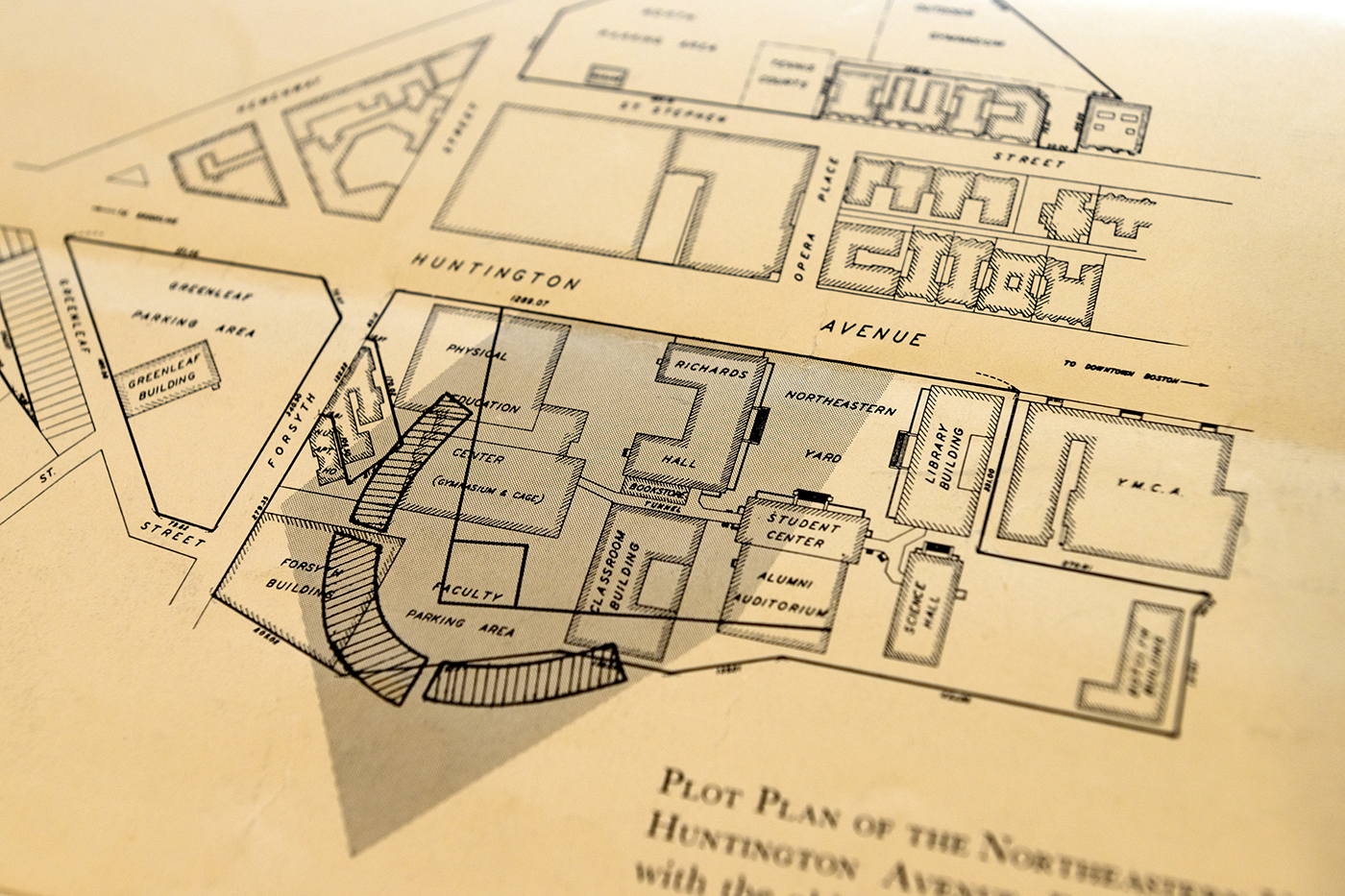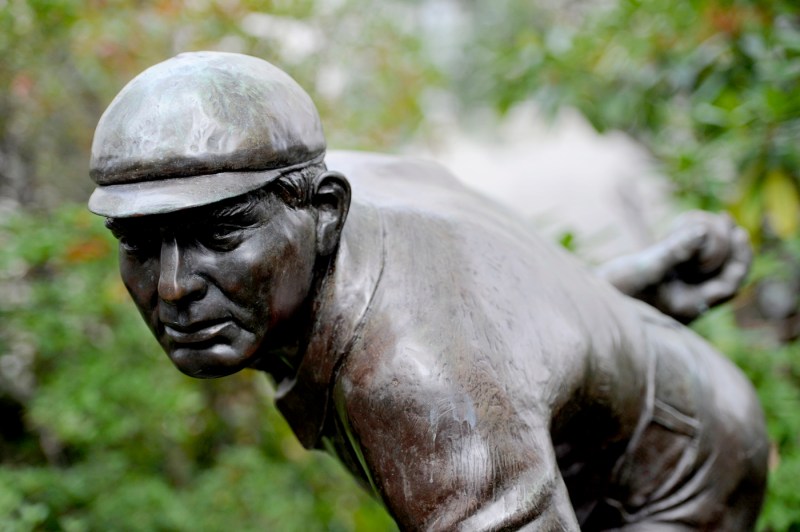The first World Series was held at Northeastern 122 years ago

The 120th World Series between the Texas Rangers and Arizona Diamondbacks features some of baseball’s biggest stars — Corey Seager, Corbin Carroll, Ketel Marte and Marcus Semien, just to name a few.
It’s an annual baseball celebration with historic ties to Northeastern. Did you know that the first World Series was held more than a century ago on the grounds of the university’s Boston campus?
On Oct. 1, 1903, a crowd of more than 16,000 watched the visiting Pittsburgh Pirates beat the Boston Americans 5-3 in Game 1 of the inaugural World Series. It was held on a site now occupied largely by Northeastern’s Cabot Physical Education Center, and there was no anticipation for the grand spectacle that the World Series would become.

The upstart Boston team — to be renamed the Red Sox five years later — won the final four games to win the initial showdown between the National and American leagues. The champs were led by 36-year-old Cy Young, the best (and oldest) pitcher of that pioneering era. Young, who would retire with 511 wins — a record unlikely to be broken — didn’t use a mitt until his seventh Major League season.
“They had to enlist Cy Young and a couple of other players to help the ground staff tear tickets at the World Series,” says author and historian Richard A. Johnson, longtime curator of The Sports Museum of New England. “He wouldn’t do it for a game he was starting, but he was there, tearing tickets at the turnstiles. You can imagine coming into the park and saying, ‘Oh, hey, Cy.’”
A statue of Young marks the location of the original World Series infield in what is now a small campus garden adjacent to Churchill Hall.

The Boston Americans were created in 1901 as part of the newly formed American League. More than 200 fans showed up to help build the Huntington Avenue American League Baseball Grounds, across the train tracks from the rival National League park on Columbus Avenue (also occupying Northeastern property) that was the home field of the Boston Beaneaters. The Americans undercut their rivals by charging 50 cents per ticket and 25 cents per additional ticket — half as much as the team next door — while stealing their best player, Jimmy Collins, at an extravagant $4,000 salary.
“So much of the landscape that existed at the time is still there — Symphony Hall, Jordan Hall, all of those old brownstones and brick buildings on Massachusetts Avenue and St. Botolph Street,” Johnson says. “Was there another neighborhood in the world that had the combination of cultural and sporting attractions that that part of Boston possessed?”
Fans attending the 1903 World Series on Huntington Avenue were typically white men wearing bowler hats, the old photos suggest.
“It was almost like a stockyard,” Johnson says. “You were herded into the park going down these sluiceways. The [initial] games were oversold; there were people actually behind ropes on the field. It would never be approved by fire marshals now.”
That World Series was a first-of-its-kind experiment concocted by the Pirates, who were 1903 champions of the National League, and the rival-league champion Americans. There would be no World Series in 1904 because the New York Giants refused to participate for fear of having to face their newfound rivals, the New York Highlanders (to be known later as the Yankees), who in the final days of the season were overtaken by Boston for the American League championship.
“The owner of the Highlanders, not thinking his team would be a contender, rented his stadium to Fordham University for a football game — so some games that should have been in New York were played in Boston, giving the Americans the home field advantage,” Johnson says. “New York lost on a bad business judgment.”
The World Series was renewed in 1905 as an annual event that would come to be known as the “Fall Classic.” Johnson argues that the Americans (Red Sox) should be credited as champions of 1904 based on the Giants’ forfeit.
“They were the uncrowned champions,” says Johnson, who adds that he may someday petition Major League Baseball to recognize Boston as the 1904 World Series champion.
The 1903 World Series was a best-of-nine-games event. The Pirates won two of the first three games in Boston, including the opener, a 7-3 victory that featured the first World Series home run (an inside-the-park hit by Pittsburgh outfielder Jimmy Sebring).
A Game 4 win at home gave the Pirates a 3-1 series advantage. But they were undone by a lack of pitching (one of their starters had experienced paranoid delusions and entered what was known as an “insane asylum,” where he would spend the rest of his life; another developed a sore arm while trapshooting) and a leg injury to their legendary shortstop Honus Wagner, whose baseball card sold recently for $7.25 million.
“I was too bum,” acknowledged Wagner, who committed six errors and batted .222 for the series. “What does it profit a man to hammer along and make a few hits when they are not needed only to fall down when it comes to a pinch?”
The Americans returned home to win Game 8 in Boston before a small crowd of 7,455 on a 3-0 shutout in a brisk 95 minutes by pitching star Bill Dinneen, who six years later would retire to become an umpire — earning assignments to eight World Series from 1911 to 1932. Afterward, players from both teams posed for a photo together, signaling that they regarded the World Series as a success. Indeed, the owner of the Pirates so appreciated his losing team’s efforts that he donated his share of ticket sales to the players, enabling each to receive a bonus of $1,316 — which was $134 more than the Americans received as champions.
For their part, the Boston players were unhappy that their owner refused to extend their salaries into the World Series. The ensuing labor dispute helped create more interest in the event.
“It resonated because many of the fans going to games were members of unions, and unions were a much bigger part of daily life in that time period—especially in a union city like Boston,” Johnson says. “I have often said that this inaugural World Series was part of what changed the whole position of sports coverage in the popular press: It became a bigger deal because of all of the dimensions of this particular event.”
Author and historian Glenn Stout has surmised, based on the poor quality of play in the opening games, that players of the two teams conspired to extend the series because their income was based on ticket sales.
By 1912, the Boston Red Sox had grown so popular that they were moving to their new headquarters at Fenway Park, which was opened a few days after the sinking of the Titanic. The Huntington Avenue ballpark was demolished and in 1934 the land was purchased by Northeastern, which dedicated its Cabot center on the site in 1954.
For media inquiries, please contact media@northeastern.edu.





